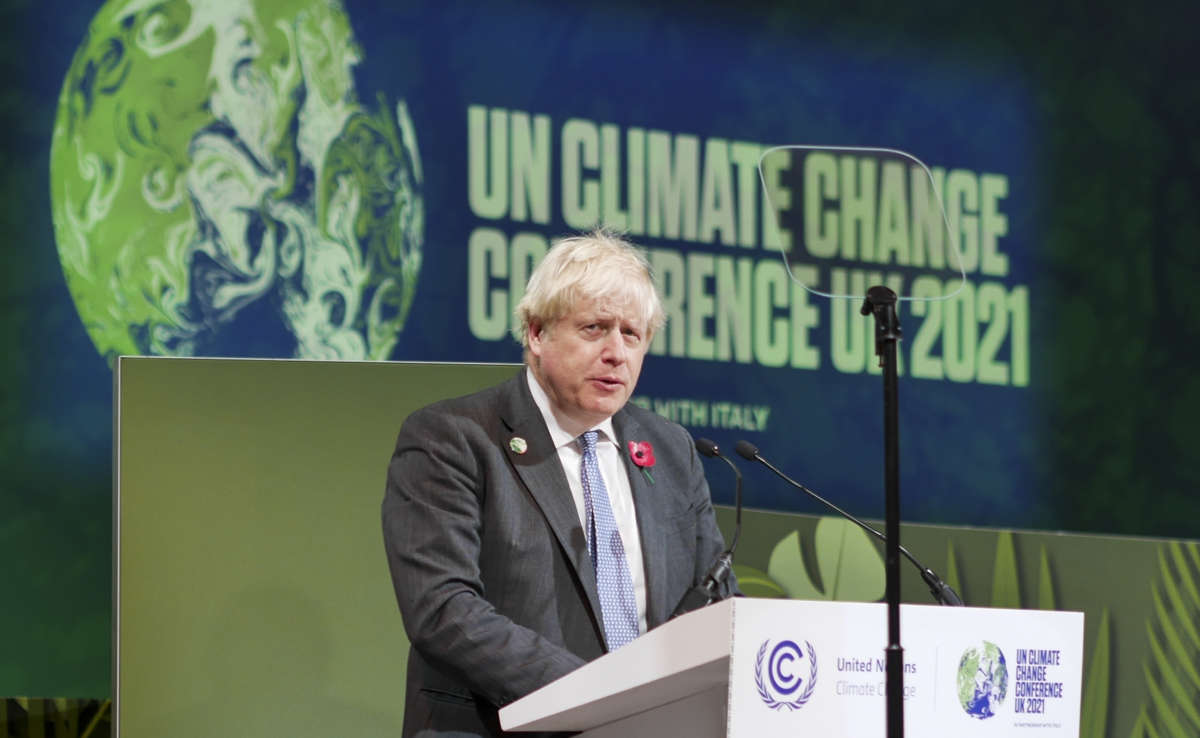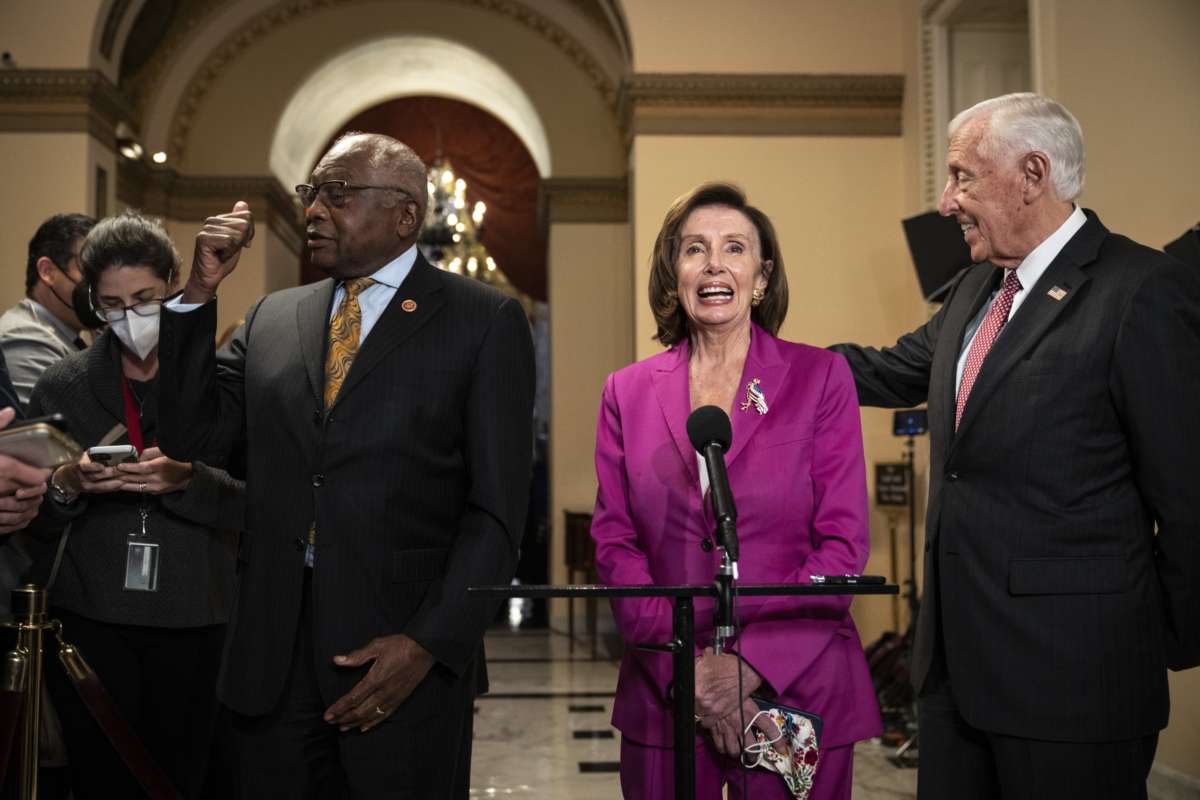
BY Gareth Dale,
The “problem with COP,” said a UN observer, is that “everyone has a business class mentality.” In the groupthink of political leaders and diplomats gathered at the Glasgow summit, above all those from the Global North, when addressing the climate crisis, a business approach must prevail. Efficiency measures and new technologies take the star role. Regulation should be “soft”: all promises and no sanctions. Virtually all industries should carry on expanding without restraint — and of the 35 stalls at COP26 that parade countries’ green credentials, only two mentioned the need to shut down fossil fuels. “The marketplace,” U.S. climate envoy John Kerry assured journalists in Glasgow, will shut down the fossil fuel industries so there’s no pressing need for politics to intervene.
This mindset is increasingly at odds with the real world. The degree of hope vested in tech solutions is unrealistic. The market isn’t shutting down the fossil fuel sector at anything like the pace required, in Kerry’s USA and elsewhere. Pollution by the wealthy must be addressed head on: The richest 1% will soon be emitting 16% of global emissions. Alongside fossil fuels, some other industries (aviation, cattle, SUVs) simply must shrink. This can be achieved while avoiding the hairshirt, as the Cambridge University engineer Julian Allwood has shown, but it will require robust regulation.
The business class is dominating the COP26 agenda in more direct ways too. Global negotiations require the hosts to ooze credibility, yet this is running low in Glasgow. Details are emerging every day of the influence of climate deniers and the fossil-fuel lobby at the heart of Britain’s government.

A striking example occurred on November 3. The summit’s host, British Prime Minister Boris Johnson, had been relishing the limelight. But on that day he quit the stage and flew by private jet to London to dine with Charles Moore, his former boss from his days as a Daily Telegraph columnist. Moore, a notorious climate-change denier, is a close chum of Owen Paterson. Paterson, a Tory parliamentarian and former government minister, has been embroiled in a long-running corruption scandal, which was now dominating the headlines.
That same day, on Johnson’s instructions, Tory MPs voted to overturn the finding by Parliament’s standards committee that Paterson had acted corruptly — and to rip up the Parliament’s entire system for combating sleaze. It was an extraordinary move. Corruption had been proved: Paterson did receive a six-figure annual sum to lobby for private companies in Parliament, he did fail to declare this, and it is against parliamentary rules.
The Paterson story that day concerned his corrupt activities, but we should be aware that, of his other career highlights, hostility to environmentalism is high on the list. He has long been at the center of Britain’s climate-denial fraternity — which includes his own brother-in-law, Matt “King Coal” Ridley. Paterson claims that global heating could be a good thing for Britain; he pooh-poohs those who “get emotional” about such issues.
This was no mere yapping from the fringes. In the mid-2010s Paterson used his position as environment secretary to push for the expansion of fracking, among other environmental delinquencies.
This invites us to ask: Why would Johnson put his political capital in support of this tool of the fossil-fuel industry — not only risking that the Tories be seen once again as the party of sleaze, but also soiling his own green credentials?
The answer has much to do with the morphing of climate denial into climate delay and climate dereliction.
Johnson is the archetype. Prior to his premiership he was a proud climate sceptic, of a Malthusian stripe. He fed his Telegraph readers with scraps of climate mysticism, proposing that a mini ice age could be upon us “by 2035,” and throwing snide remarks at the renewables sector — wind turbines can “barely pull the skin off a rice pudding.”
Most memorable was his Telegraph column entitled “Forget global warming: global over-population is the issue.”
“The biggest single challenge facing the Earth,” Johnson argued, is not climate change but women’s unrestrained fertility. He tips his hat to his father, Stanley, a World Bank and EU technocrat and Malthusian zealot. Although both men are vocal exponents of controlling women’s fertility, Johnson Sr. fathered six children and Johnson Jr. has added at least half a dozen more to the global population. This is no ordinary hypocrisy. For Malthusians, different moral rules do and should apply to rich and poor. That’s what Malthus is all about; it’s what earned him his place on the conservative seat in the pantheon of classical political economy.
Upon entering 10 Downing Street, Johnson experienced a Damascene conversion, or so the story goes. “How Boris Johnson went from climate sceptic to eco-warrior” ran the typical headline. As any eco-warrior knows, the pressing task facing global capitalism is to quit its addiction to fossil fuels. On this count, how would the new eco-campaigning government fare? Would it, in the interests of a habitable planet, wage war on the combustion of oil and gas with the ferocity that its Thatcher-era predecessor had, in the interests of capitalist enrichment, waged war on the striking coal miners?
Not a bit of it. Johnson stuffed his cabinet with climate deniers such as Jacob Rees-Mogg, opponents of renewable energy such as Andrea Leadsom, and supporters of the coal industry such as Priti Patel. His education minister, Nadhim Zahawi, trousers nearly £400,000 (roughly $540,000) per year from an oil firm. His health minister Sajid Javid, is a militant supporter of the fracking industry — and “a big fan” of the hyper-capitalism of Ayn Rand. Even Alok Sharma, appointed by Johnson as President of the COP26 summit, is on the fossil-fuel payroll. He pockets five-figure sums from at least two oil companies, and has repeatedly voted in parliament for fossil-fuel expansion.
Johnson’s conversion, then, was not to eco-warrior. Yet it did mark a shift. According to one of his aides, he was partly responding to “elite fashion” and to a changing electoral atmosphere. “Forget global warming!” doesn’t play well with voters. “We’re making things happen!” certainly does.
But the crucial staging post on Johnson’s journey from climate denial to climate delay came when he woke to the potential of green growth. Whereas for his earlier self, climate change posed a threat to the neoliberal “business as usual” that had served his class so well and must therefore be doubted or denied, Johnson 2.0 recognizes that essentially the same economic agenda could, with moderate adjustments, be marketed as a response to the climate crisis. The core green-growth message is that all systems — energy, travel, housing, etc. — can continue as normal and indefinitely even if, in some cases, new materials and technologies are required. The subtext is that fossil-fuel consumption need not be addressed directly; technologies will provide a short-circuit, a “technological fix.”
The surest test of whether a strategy can be classed as “eco-warrior” or “climate delay” is to ask whether it demonstrably reduces emissions in the next few years, or rests on future speculative promises. Three events last month shed light on the British government’s credentials in this regard.
The first saw the campaign group Insulate Britain block ports and motorways to voice the demand that government should fund the insulation of all social housing by 2025, followed by the low-carbon retrofit of all homes by 2030. This plan offers an obvious ‘win win’: a jobs program that would upgrade skills; insulation of the draughty homes of poorer citizens, ending fuel poverty and saving thousands of lives; and the retrofitting of all homes to enable a successful transition from gas heating to electric heat pumps, thereby switching off one of Britain’s biggest fossil-fuel spigots. Any government of an “eco-warrior” disposition, or one that supported a social agenda of leveling up, would embrace it. Johnson’s sought to put the protestors behind bars.
Second, just as COP26 delegates were gathering in Glasgow and applying the finishing touches to their NDCs, the Chancellor, Rishi Sunak, announced his budget. It contained virtually no funding for buildings insulation, no significant green measures and some positively brown ones, notably the slashing of tax on domestic aviation — this in a small country crisscrossed by rail and coach networks.

The third was the government’s Net Zero Strategy. Alongside electric vehicles, nuclear energy and offshore wind it emphasizes three technologies: carbon capture and storage (CCS), synthetic aviation fuel (SAF), and hydrogen (which receives 501 mentions in its 368 pages). These, the document claims, will be central to enabling Britain to reach net zero by 2050.
Without doubt, the Net Zero Strategy signals a transformation in energy policy and significant emissions reductions may well result. Equally striking, however, is that the keystone technologies are speculative. Hydrogen, SAF and CCS are proven, but they are currently tiny in scale, and many are failing. At present, Britain boasts no functioning CCS projects, no “green hydrogen” plants, and no SAF plants. Their success as pillars of the net-zero program would require a large-scale jump-start and subsequent roll-out, to include not only the construction of the plants themselves but of storage facilities and distribution networks, plus the adaptation of entire heating and transport systems (in the case of hydrogen) and the exploration of suitable aquifers (in the case of CCS). Typically, that sort of scale-up takes decades.A dominant strand within elite responses to the climate emergency in Britain, the U.S. and beyond sustains the technocratic myth that decarbonization must center on the deployment of new technologies.
Green hydrogen and SAF, moreover, require colossal energy inputs that will somehow have to be provided. Britain’s hydrogen strategy, published this August, places its heavy bets on blue hydrogen, with only small projects for its green cousin. Blue hydrogen should be renamed brownish-blue: It’s dubious and leaky, and it gambles on CCS succeeding at scale. The ulterior aim is to grant a new lease of life to the fossil fuel giants.
The complexity and scope of even one of these programs is enormous. Arguably, one could see Roosevelt’s Tennessee Valley Authority as an analog, though that would be to overlook the fact that its central technology, the dam, was built upon millennia of engineering trial and error: It faced no novel problems of scaling up. We should certainly refrain from likening them to missions of “targeted specificity,” such as the Manhattan Project or the moonshot. And yet this is precisely the comparison that John Kerry drew earlier this year. “Fifty per cent of the reductions we have to make to get to net-zero by 2050,” he proposed, “are going to come from technologies that we don’t yet have. … But look at what we did to push the creation of vaccines, look at what we did to go to the moon, look at what we did to invent the internet.” (If nothing else, you have to admire the chutzpah. The world is burning but the fire brigade will arrive. Half of the equipment they need doesn’t exist and they don’t know how to make it, but hey, they’ll find a way. If you’re troubled and need inspiration, gaze at the moon.)

This mindset is pervasive, a dominant strand within elite responses to the climate emergency in Britain, the U.S. and beyond. Its consequences are troubling. It sustains the technocratic myth that decarbonization must center on the deployment of new technologies, with a downplaying of the potential roles for well-known technologies (such as buildings insulation) and for social-systemic change. It breeds complacency: We needn’t worry about burning oil and coal because the tech guys will catch and store the carbon; fuel for transportation can simply be switched from hydrocarbons to hydrogen; planes can fly on biofuels and batteries, and so on.
The leaders gathered at COP26, with the British government to the fore, remain in the thrall of technology fetishism. It’s a syndrome that in recent memory proved the undoing of what had been a supposedly successful COP gathering. I am referring to COP21 in Paris, which yielded the celebrated Paris Agreement. That concord of 2015 was based heavily on the COP delegates’ magical belief in a particular technology: Bio Energy with Carbon Capture and Storage (BECCS). Since then, BECCS has been discredited and the Paris Agreement on which it was built has crumbled. The hosts of COP26 appear determined to learn nothing from that debacle. The true beacons at COP26 are the civil-society movements that have encircled the negotiations, applying pressure to those within and raising awareness without. As the summiteers disperse, so the task turns to building on that experience and holding lawmakers’ feet to the fire.




